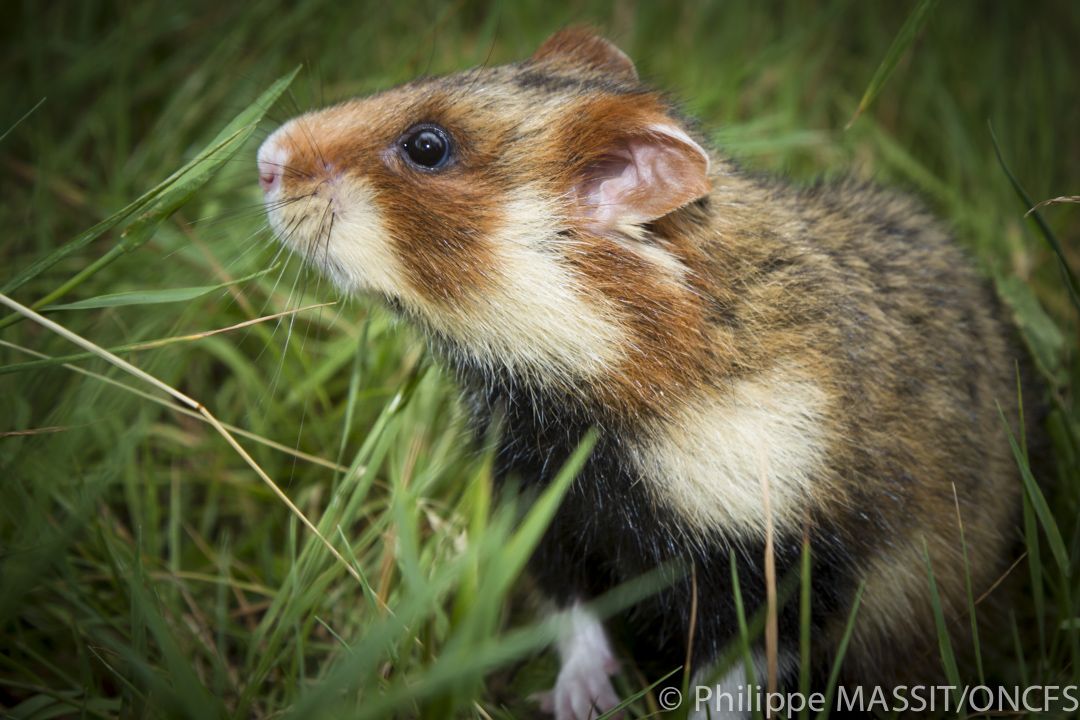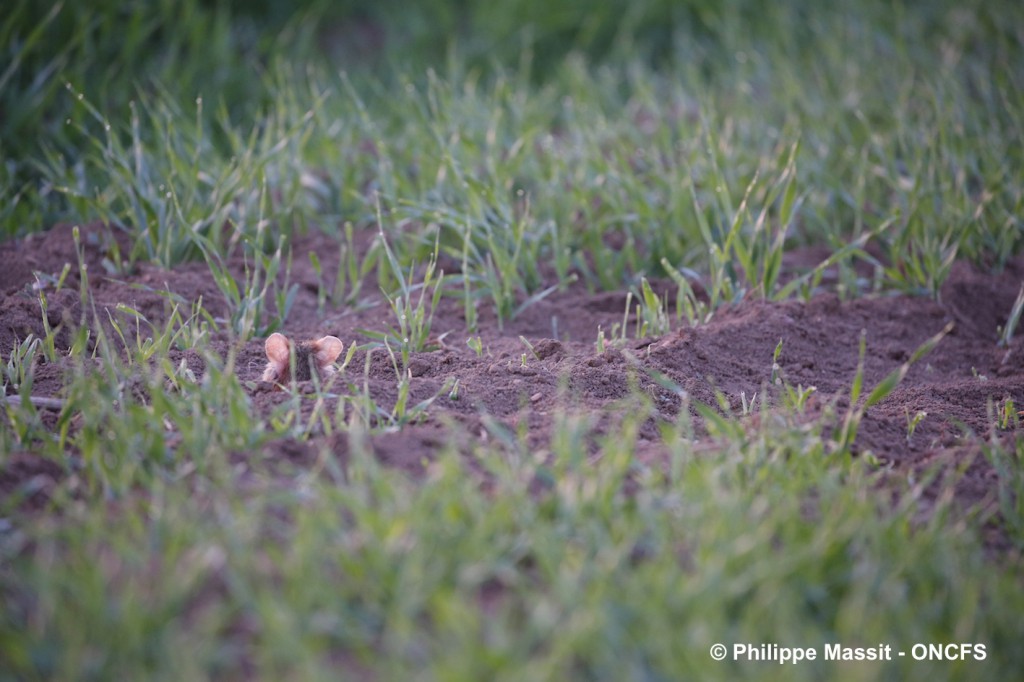Monitoring European Hamsters through burrow counts
28 mai 2018Every year since 2001, European Hamsters are monitored at the end of their hibernation period. These very discreet rodents are not easy to spot and observe, so monitoring relies on searching for their burrows, as the most visible indication of their presence. Since 9 April 2018, 4 teams of 5 ONCFS (French National Hunting and Wildlife Agency) employees have roamed hundreds of plots of land planted with winter cereals providing straw (wheat, barley, oats, etc.), alfalfa and meslin, looking for hamster burrows.
Credits for all photos: P. Massit ONCFS
Long and arduous identification
All the employees map out and number all the plots that must be searched within the Strictly Protected Areas for these hamsters (about 40 communes are involved). Then they investigate the land by walking every 10 metres through straw cereals and every 3 metres through alfalfa crops.
When a burrow is spotted, the employees make a diagnosis according to criteria such as the diameter, depth and overall appearance of the burrow entrances and earth mounds.
The burrow is also checked for the presence of hamster droppings. If the burrow is thought to belong to a hamster, it is recorded and geolocated by GPS. If it has typical characteristics, it is validated immediately. If the characteristics are not typical, it will be checked at a later date by an ONCFS employee in charge of finally validating the indications of hamster presence. Only the burrows that are certain to belong to European Hamsters are included in the data base.
The ONCFS has noticed a stabilisation in the number of burrows
These are semi-exhaustive counts, since the number of burrows observed is different from the number of burrows actually present in the areas searched.
The result of these counts thus provides a clue to the index of abundance; comparing this index over several consecutive years and areas enables the trends in the evolution of the species to be calculatedSince 2012, this index has stabilised at about an average of approximately 400 spring burrows. The estimated total population of wild hamsters in the spring isapproximately 1,000 still present on just over 2,000 ha of farmland in about 20 communes in Alsace.
The index of abundance for 2018, meaning the total number of burrows counted this spring, will be known in mid-May once the counts have ended.
Every year, a few lucky people manage to glimpse the tip of an ear or even get a good look of the rodent beside its burrow!





